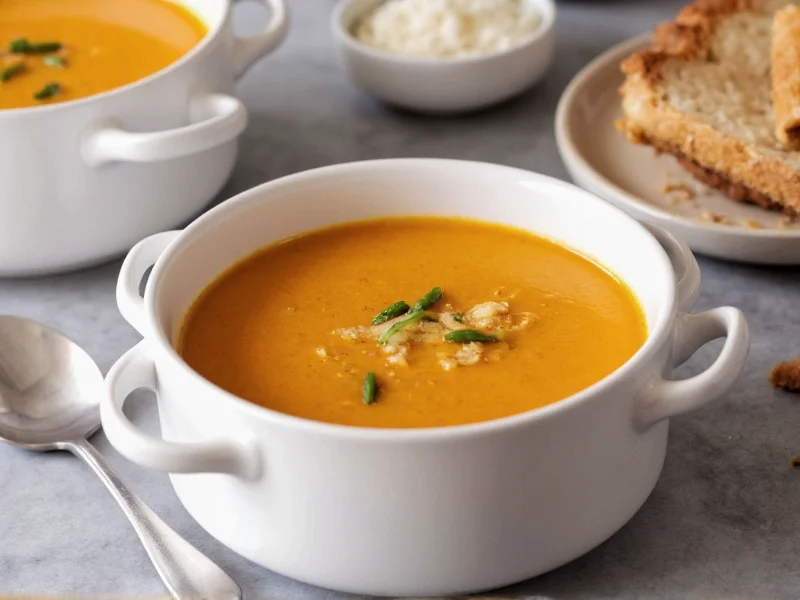Soup cups with handles serve as the perfect middle ground between standard mugs and soup bowls, offering practical solutions for enjoying hot liquid foods. These specialized vessels combine the portability of a mug with the soup-appropriate shape that prevents spills while sipping. The handle provides crucial heat protection, making them significantly safer for hot soups than handleless bowls, especially for children, elderly users, or anyone sensitive to heat.
Why Handles Make Soup Cups More Functional
The addition of a handle transforms the soup drinking experience in several important ways. Handles provide immediate heat protection, eliminating the need for napkins or pot holders when serving piping hot soups. This design feature also enhances accessibility for people with limited dexterity or arthritis, who might struggle to lift and tilt traditional soup bowls. From a practical standpoint, the handle creates a more stable grip, reducing accidental spills during consumption.
| Feature | Soup Cups with Handles | Traditional Soup Bowls |
|---|---|---|
| Capacity | 6-12 ounces | 12-20 ounces |
| Shape | Narrower, mug-like profile | Wide, shallow bowl |
| Drinking Method | Direct from cup | Requires spoon |
| Heat Retention | Better (narrower surface area) | Poorer (wider surface area) |
| Mobility | Easily portable | Less portable |
Material Considerations for Soup Cups with Handles
The material of your soup cup significantly impacts its performance and safety. Ceramic soup cups with handles remain the most popular choice due to their excellent heat retention properties and microwave safety. High-quality stoneware options provide durability while maintaining heat well. For those seeking lightweight alternatives, tempered glass soup cups with handles offer visibility of contents while remaining dishwasher safe.
When selecting materials, consider thermal shock resistance—sudden temperature changes can cause cracking in lower quality ceramics. Premium ceramic soup cups with handles typically undergo multiple firing processes to enhance durability. For outdoor or travel use, stainless steel insulated options provide superior heat retention but lack the traditional ceramic aesthetic.
Design Elements That Enhance Functionality
Beyond the basic handle feature, several design elements make certain soup cups with handles superior for specific uses. The lip design significantly affects drinking comfort—cups with a slightly tapered rim direct liquid smoothly to the mouth. The handle's shape and attachment point determine grip security; ergonomically designed handles that curve away from the cup body provide better heat insulation.
For individuals with mobility challenges, consider soup cups with handles featuring a wider base for stability or those with non-slip silicone bottoms. Some specialized designs incorporate double-walled construction for additional heat protection, making them ideal as soup cups with handles for elderly users or children.
Practical Applications Across Different Settings
Soup cups with handles excel in various environments beyond traditional dining. In office settings, their portability makes them perfect for enjoying soup at your desk without requiring a spoon. Many healthcare facilities prefer these vessels for patients who need assistance with eating, as the handle design promotes independence while minimizing burn risks.
Cafes and casual dining establishments increasingly use soup cups with handles for their single-serving portions, recognizing that customers appreciate the convenience of drinking broth-based soups directly. For home use, these cups work exceptionally well with automated soup makers that dispense directly into the serving vessel.
Care and Maintenance Guidelines
Proper care extends the life of your soup cups with handles significantly. While most ceramic soup cups with handles are dishwasher safe, hand washing preserves glaze integrity over time. Avoid extreme temperature changes—never transfer a hot cup directly to a cold surface or vice versa. When storing, prevent handles from bearing the weight of stacked cups to avoid breakage.
For stubborn residue, soak rather than scrub aggressively. Check manufacturer guidelines regarding microwave use, as some decorative elements may contain metals unsuitable for microwave ovens. Regular inspection for hairline cracks is essential, as these can compromise structural integrity and heat resistance.
Special Considerations for Specific Needs
Certain populations benefit particularly from well-designed soup cups with handles. Occupational therapists often recommend them for patients recovering from hand injuries or with conditions like arthritis. The ergonomic design reduces the grip strength needed compared to traditional bowls.
For children's use, look for soup cups with handles featuring rounded edges and heat-resistant materials. Some manufacturers produce soup cups with handles specifically designed for small hands, with capacities around 6 ounces ideal for kids' portions. Temperature-indicating coatings that change color when contents are too hot provide an extra safety layer for young users.











 浙公网安备
33010002000092号
浙公网安备
33010002000092号 浙B2-20120091-4
浙B2-20120091-4